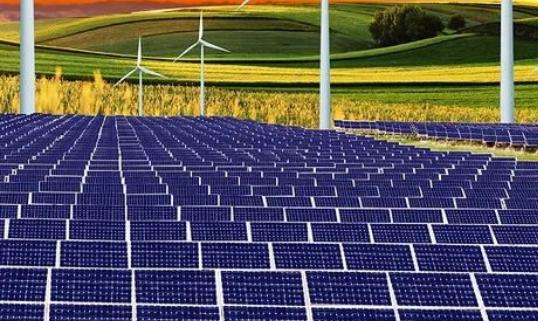The differences between horizontal axis and vertical axis wind turbines are in the following aspects:
1. Design method
The blade design of horizontal axis wind turbines is commonly used Momentum-leaf element theory, the main methods include Glauert method, Wilson method, etc. However, because the blade element theory ignores the flow interference between each blade element, and at the same time ignores the airfoil resistance when designing blades using the blade element theory, this simplification inevitably leads to inaccuracy in the results. This simplification It has little impact on the blade shape design, but has a greater impact on the wind energy utilization rate of the wind wheel. At the same time, the interference between the blades of the wind wheel is also very strong, and the entire flow is very complex. It is impossible to obtain accurate results by relying solely on blade element theory.
The blade design of vertical axis wind turbines used to be based on the horizontal axis design method and relied on blade element theory. Since the flow of the vertical axis wind turbine is more complex than that of the horizontal axis, it is a typical large separation unsteady flow and is not suitable for analysis and design using blade element theory. This is also an important reason why the vertical axis wind turbine has not been developed for a long time.
2. Wind energy utilization rate
The wind energy utilization rate of large horizontal axis wind turbines is mostly calculated by the blade designers and is generally above 40%. As mentioned before, due to the flaws in the design method itself, the accuracy of the wind energy utilization calculated in this way is very questionable. Of course, wind turbines in wind power plants will draw wind power curves based on measured wind speed and output power. However, the wind speed at this time is the wind speed measured by the anemometer at the rear of the wind wheel. It is smaller than the incoming wind speed and wind power. The curve is too high and must be corrected. After applying the correction method, the wind energy utilization rate of the horizontal axis will be reduced by 30% to 50%. Regarding the wind energy utilization rate of small horizontal axis wind turbines, the China Aerodynamics Research and Development Center has conducted relevant wind tunnel experiments, and the measured utilization rate is between 23% and 29%.
3. Structural characteristics
During one rotation, the blades of the horizontal axis wind turbine are affected by the combined effects of inertial force and gravity. The direction of the inertial force changes at any time. The direction of gravity remains unchanged, so the blade is subjected to an alternating load, which is very detrimental to the fatigue strength of the blade. In addition, the horizontal axis generators are placed at an altitude of tens of meters, which brings a lot of inconvenience to the installation, maintenance and inspection of the generators.
The blades of the vertical axis wind turbine are much better stressed during rotation than those of the horizontal axis. Since the direction of the inertial force and gravity always remains unchanged, the blades are subjected to a constant load. The fatigue life is longer than that of horizontal axis wind rotors. At the same time, the vertical axis generator can be placed under the wind wheel or on the ground for easy installation and maintenance.
4. Starting wind speed
It is a consensus that the starting performance of horizontal axis wind turbines is good. However, according to the wind turbine test conducted by China Aerodynamics Research and Development Center on small horizontal axis wind turbines According to tunnel experiments, the starting wind speed is generally between 4 and 5m/s, with the maximumIt actually reached 5.9m/s. Such starting performance is obviously unsatisfactory. It is also a consensus in the industry that the starting performance of vertical axis wind turbines is poor, especially for Darrieus type Ф type wind turbines, which have no self-starting ability at all, which is also a reason that limits the application of vertical axis wind turbines. However, for the Darrieus type H-type wind wheel, there is the opposite conclusion. According to the author's research, as long as the airfoil and installation angle are appropriately selected, quite good starting performance can be obtained. According to tunnel experiments, the starting wind speed of this Darrieus-type H-shaped wind turbine only needs 2m/s, which is better than the above-mentioned horizontal axis wind turbine.














